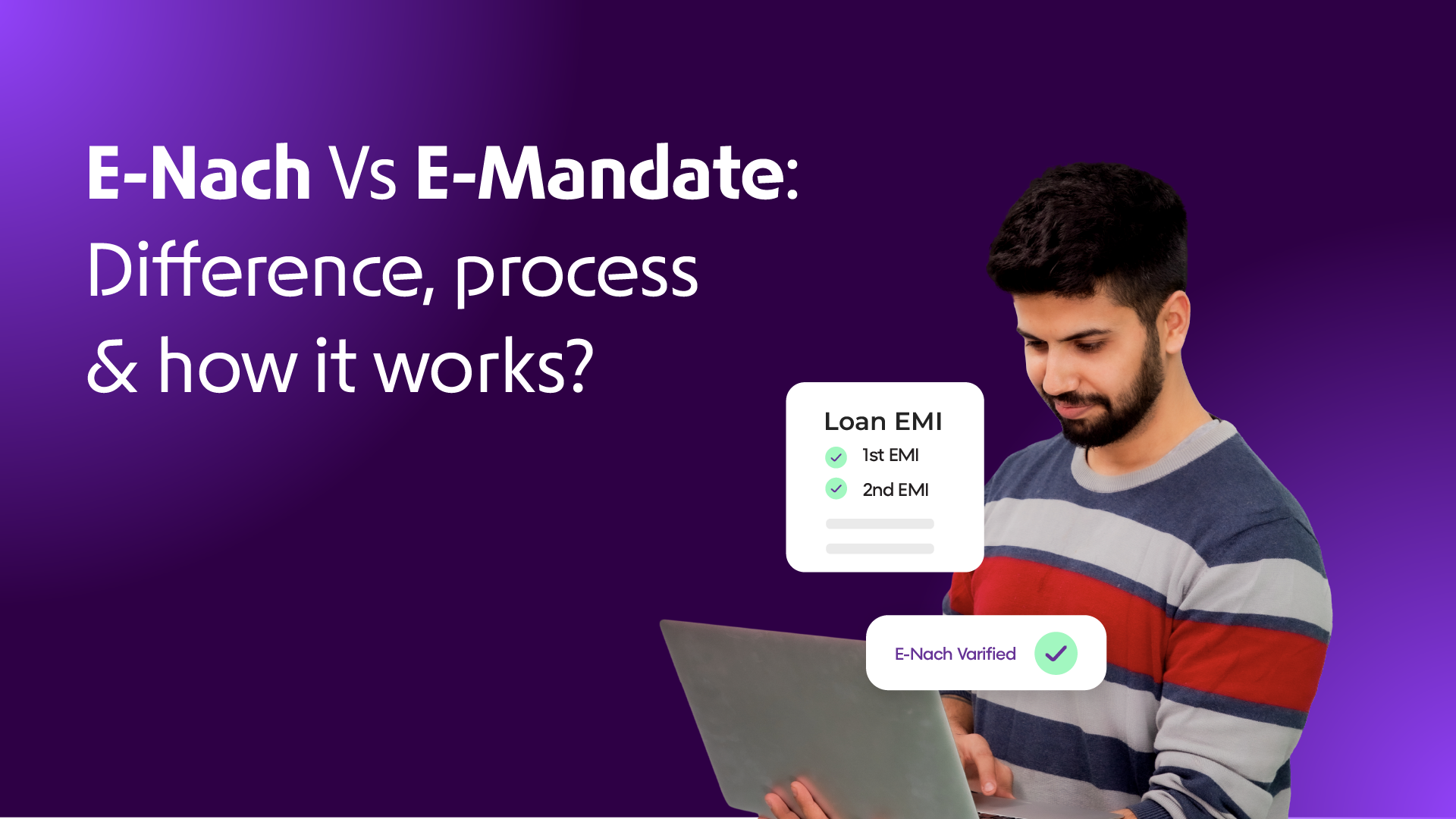When it comes to automatically handling regular payments, two terms you often hear are E-Nach and E-Mandate. They’re essential for businesses, especially those with recurring transactions. But what are they?
E-Nach stands for Electronic National Automated Clearing House, managed by NPCI, offering a centralized way to automate payments across all banks. E-Mandate, managed by individual banks, handles payments within a specific bank, like credit card bills. So, while E-Nach covers all banks, E-Mandate is specific to one bank.
What is E-Nach?
E-Nach stands for Electronic National Automated Clearing House. It is an electronic payment service launched by the National Payments Corporation of India (NPCI). E-Nach allows businesses and financial institutions to automate the process of collecting recurring payments from customers’ bank accounts. It simplifies the collection of regular payments like loan EMIs, insurance premiums, and subscription fees.
What is E-Mandate?
E-Mandate is an electronic version of a physical mandate that authorizes banks and financial institutions to debit a specific amount from a customer’s account at regular intervals. This authorization is given by the account holder (customer) and can be used for recurring transactions such as utility bill payments and loan EMIs.
Differences Between E-Nach and E-Mandate:
E-Nach:
E-Nach, or Electronic National Automated Clearing House, is managed by the National Payments Corporation of India (NPCI). It is a centralized system designed to facilitate the automation of regular payments across all banks in India. One of the key advantages of E-Nach is its speed; the centralized processing by NPCI typically makes transactions faster and more efficient.
Customers can authorize E-Nach payments through various channels, including net banking, debit cards, and Aadhaar-based verification. This flexibility makes it suitable for a wide range of transactions, particularly bulk transactions that involve multiple banks. Because E-Nach operates on a national scale, it is widely used for large-scale payment collections such as utility bills, insurance premiums, and loan EMIs.
E-Mandate:
E-Mandate, on the other hand, is managed by individual banks and follows the specific processes set by each institution. While E-Mandate also aims to automate regular payments, its scope is generally limited to the customers of a particular bank. Authorization for E-Mandate is typically done through net banking or debit cards, and the process can vary significantly from one bank to another.
As a result, the processing time for E-Mandates can differ depending on the bank’s internal systems. E-Mandates are commonly used for recurring payments within the same bank, such as credit card bills, subscriptions, and SIPs (Systematic Investment Plans). Although E-Mandate offers a robust solution for automating payments, its decentralized nature means it may not be as quick or universally applicable as E-Nach.
How E-Nach and E-Mandate Work Together for Business Loans:
E-Nach (Electronic National Automated Clearing House) and E-Mandate work together to streamline the process of repaying business loans. An E-Mandate is an electronic authorization given by the borrower to the lender, allowing the lender to automatically debit the borrower’s bank account for loan repayments. Once the E-Mandate is set up, E-Nach facilitates these recurring transactions by electronically processing the debits on the scheduled dates.
This automation ensures timely payments without manual intervention, reduces the risk of missed or late payments, and enhances the overall efficiency of loan management. By integrating E-Mandate with E-Nach, businesses can ensure a seamless, secure, and reliable repayment process, improving cash flow management and maintaining a good financial reputation.
Both of them are powerful tools that simplify the process of collecting recurring payments. While E-Nach offers a more centralized and faster processing option, E-Mandate provides flexibility within individual banks. For businesses, especially those in the lending sector, utilizing these tools can significantly enhance efficiency and reliability in payment collections. Understanding the differences and processes of these two is crucial for streamlining financial operations and ensuring seamless transactions.
Open Capital offers reliable term loans up to 30 lakhs without any need for collateral. Knowing the different types of business loans in India helps you pick the right one for your business’s growth and financial needs. Whether you need working capital, a line of credit, or a term loan, each type has unique features to support your growth. With Open Capital, you can easily apply online for a term loan without collateral. Choosing the right business loan can give your business the funds it needs to succeed.
Stay tuned for more insightful content on small business loans and follow us for regular updates! YouTube | Instagram



